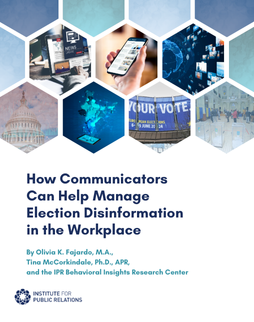We’ve seen glimpses of how text mining can provide early warning of poor financial performance and fraud, but employee wellness may be the next frontier
A central premise of my new book is that communication is a remarkably accurate barometer of organizational health. The words we use in organizations provide important clues about the narratives we value and champion, as well as the realities we might be seeking to avoid. One way this is illustrated is in new applications of AI to the workplace, and in particular the revealing insights emerging from the field of text mining — which uses computer algorithms to extract information and patterns from large amounts of textual data.
A sub-field of text mining — sentiment analysis — focuses on the emotional tenor and tone contained in pieces of text. Sentiment analysis is proving to be a remarkably insightful tool in understanding the relationship between word choice (for example, in annual reports and IPO prospectuses) and financial performance, as persuasively seen in the work of Loughran and McDonald at the University of Notre Dame (2016). But the field is also emerging as an important regulatory technology in ferreting out fraud, such as in Das, Kim, and Kothari’s fascinating analysis of internal communications during the Enron debacle (2019).
Organizations, like people, tend to downplay negative news in their communications, carefully couching it among more positive messages. As communicators have become defter in chaff and misdirection techniques, these types of avoidance strategies have become more prevalent in organizational life. Sometimes the intentions are benign, if somewhat rose-tinted. But all too often, these types of communications are misleading, and may even be mendacious or veering into criminality.
Sentiment analysis in finance, such as the LM Word Dictionary (Loughran & McDonald, 2011), classifies language into various categories, such as negative words, positive words, and strong and weak modals. Weak modals — also known as “weasel words” — are especially interesting, and include terms such as may, might, could, depending, possibly, and appears to signal uncertainty. In my book, I posit that weak modals, from a neuroscience perspective, probably trigger a threat response in the brain (our brains tend to be preoccupied with certainty and control). Yet the evidence from neuroscience suggests that this goes beyond sentiment, to the structure of language itself.
For example, pronouns (such as how a leader uses “I” or “we” pronouns in a speech), while not conveying sentiment explicitly, produce dramatic changes in the brain — including activating the neural correlates related to belonging and inclusion (McHale, 2022). Other structural characteristics are equally profound. Das and colleagues’ Enron study found that factors such as email length and frequency were even stronger predictors of Enron’s coming crisis than sentiment analysis — in one 13-week period, they found that for every 20-character decline in email length, there was a 1.2% drop in stock price.
Whether the Enron findings hold up in additional studies remains to be seen. But it’s clear that there is tremendous insight to be gleaned. And text mining is moving beyond RegTech and into the organization development space more broadly, especially employee behavior and culture. The Financial Times reported that PwC, the global consulting firm, recently conducted an experiment using AI to analyze employee emails to improve interactions between colleagues. The objective of the study was to provide feedback on how messages were coming across, with the ultimate goal of fostering greater awareness and encouraging more prosocial language and behaviors.
Emails have significant consequences for job satisfaction and organizational commitment (Lim & Teo, 2009). Being more mindful of our language — with the occasional nudge from an AI bot — may help us remember our netiquette and smooth relationships and team processes. It may also provide an early warning system of mental health and behavioral risks for employees, by monitoring sentiment and tone, and even time spent drafting emails (providing clues on the degree of impression management — which is exhausting to maintain). Beyond analyzing for sentiment, text mining may signal impending burnout and exhaustion in employees, by monitoring — for example — sharp upticks in late night and weekend emails, and overall email volume.
Text mining may not be as ethically murky as it first appears. Proponents argue that it actually avoids many of the privacy concerns around reading individual emails, because it treats datasets systematically, searching for broader trends. Ethical guidelines and rules are definitely needed, and privacy watchdogs should be on high alert. But the age of AI-driven RegTech and WellTech in our organizations has arrived.




